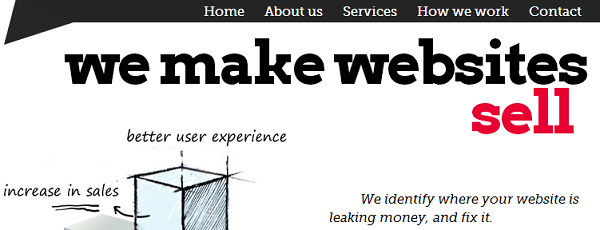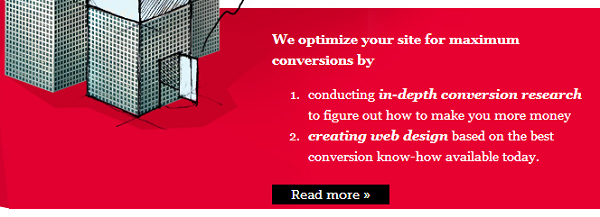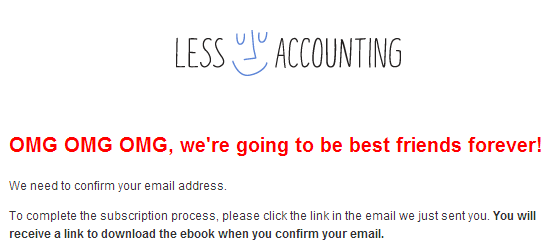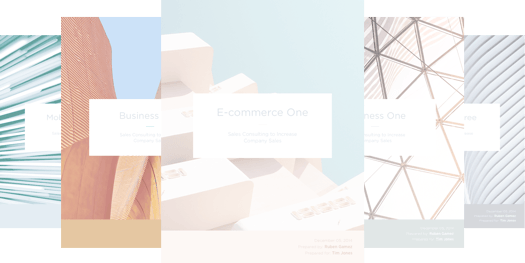Why would anyone purchase my services?
As a freelancer, have you ever asked yourself that question? Do you have an answer for it?
If not, you’re going to have a hell of a time communicating to clients exactly why their hard earned cash should leave their wallets. What you need is a unique selling proposition, or a clear, concise positioning that separates you from the “average joe” in your market.
Today, we’ll address this very common problem by looking at what makes an outstanding value proposition, and how even newbie freelancers can stand out in a sea of competitors.
Interested?
Let’s take a look!
The Key Traits of a Great Value Proposition
Recently, a smart post on Vandelay Design addressed the issue of why designers should even bother with having a unique position in the marketplace. The advice, while centered on designers, rings true for freelancers of all types:
It’s likely that many of your clients have a hard time deciding what designer they should hire. For most clients this can be a daunting process because they don’t have the experience in the industry to know what separates one designer from another. If you can help these clients by making your USP obvious it could help to make their decision easier because they can see exactly what you have to offer that other designers do not.
In essence, a strong USP is worth thinking about and implementing because you’re doing the legwork to help your clients decide in your favor. This isn’t your typical ‘conversion’ advice, because it isn’t about optimizing web pages – it’s about optimizing decisions.
Given this, let’s go over a few key factors that every strong freelance USP should have:
- A laser focus on a small group of ideal clients: In a previous article I tackled how any freelanceer can build a comprehensive customer profile template. I mention this because I still believe this is a big problem plaguing most freelancers looking for work: they still don’t have ideal clients that they are targeting, it’s more of a “whoever will have me” system. There’s a saying in the dating world (there’s a point to be made, I promise) that if you look hungry, you’ll starve. In other words, the exclusive nature of “I only work with these clients…” actually makes you look more enticing. As an example, in the WordPress community, I know certain folks will only develop for specific theme frameworks, which makes them highly sought after by passionate users of said frameworks.
- Authentic branding throughout: Once you’ve developed a unique selling proposition, your job is to communicate it clearly and often. This is where design, branding, and messaging are most useful. Consider the branding for Pretty Darn Cute by Lindsey Riel—the whole site is “pretty darn cute” and speaks to a subset of Lindey’s customer base, which is female business owners and mommy bloggers. To top if off, Lindsey only designs on the Genesis Framework, which goes to show that being selective isn’t as risky as you might think!
- An explanation of why you are worth trusting: High-paying clients are mostly concerned with results and minimizing risk, especially since larger clients may be reporting to a higher-up when it comes to booking you and paying you those premium rates. You need to clearly explain why and how you are the specialist worth hiring for a very specific job, and emphasize the trust factor like there’s no tomorrow.
For that last point, I really enjoyed an example given on LessAccounting (covering a similar topic) from Brennan Dunn:
Say you’ve worked with a lawyer in the past. You now offer a niche design service to law firms. Throw up a landing page that uses words [that] lawyers like to use. Make yourself a lower risk hire for a lawyer who wants a site redone. 99% of lawyers will prefer to hire the “web designer who specializes in helping lawyers get new clients off the Internet” versus a “web designer.”
One great example of a team that “gets” all of this can be found in Markitekt. Not only are they appealing to clients who are willing to pay, they sell their unique value proposition with bold headlines that will attract certain customers and send others packing:
No mention of “3 design iterations, 1 logo, blah blah blah”, they focus on the outcomes clients care about and craft their copy to reflect it.
Not ending there, they also answer ‘How?’ with supplementary evidence and lengthy landing pages that focus on the value they provide instead of the price being paid:
Does your site market your value or simply set you up as a commodity? Are you using the “100 year old persuasion strategy” of showing your customers how hard you work to be different from the other guys and get them the results they crave?
You should be!
3 Simple Ways to Be Different
If you are intrigued by this idea of being your own Chief Marketing Officer and putting yourself on the map through via a unique branding strategy, listen up.
I want to run through a few brief, but tried and true methods of turning a ‘blah’ micro-business into something memorable.
1.) Incorporate your personality.
A bold personality is often a USP in itself. While you should understand that many clients don’t care about the “real” you, that doesn’t mean that you can’t strategically insert bits of your personality into everything that you do.
Speaking of LessAccounting, I just signed up for their newsletter, and check out the page that I was redirected to:
The founder Allan Branch is known for being quite the character, and it shines through in key spots on the site, such as the headline: All small business accounting software sucks, we just suck the least.
If you’re running a micro-business, it’s definitely reasonable to include a bit of personality into how you present your services. Clients like hiring people they enjoy working with, which is important to keep in mind when communicating to them via impersonal mediums like text on a website.
2.) Find an intersection of ideas.
Interesting things happen at the intersection of ideas.
Sometimes a great unique selling proposition is just the intersection of two related ideas (or fields) into one unique recipe. Consider the “designer + WordPress framework” above, or my situation as a content strategist but only for software startups.
Find some interests that cross in your ideal clients and cater to them as the all-in-one solution. Think about how so many people state “I wish there was a [Popular product] for [alternative use].” Folks like Noah Kagan have taken this idea to the bank, with businesses like AppSumo literally being founded off of the belief that there should be a “Groupon for web apps.”
3.) Narrow your audience / services.
This one goes without saying!
Just as you would go see a eye doctor for vision problems, clients with [blank] problems want a specialist as well, especially those clients with money to spend.
Remember that the auto-shop that caters to American-made muscle cars will be far more in-demand than another “Jimbo’s Auto” that looks like every other competitor in the city.
Your Turn
I’d love to hear your thoughts—what do you think about having a unique selling proposition as a freelancer?
Do you currently differentiate your services with a strong brand? If so, how?





